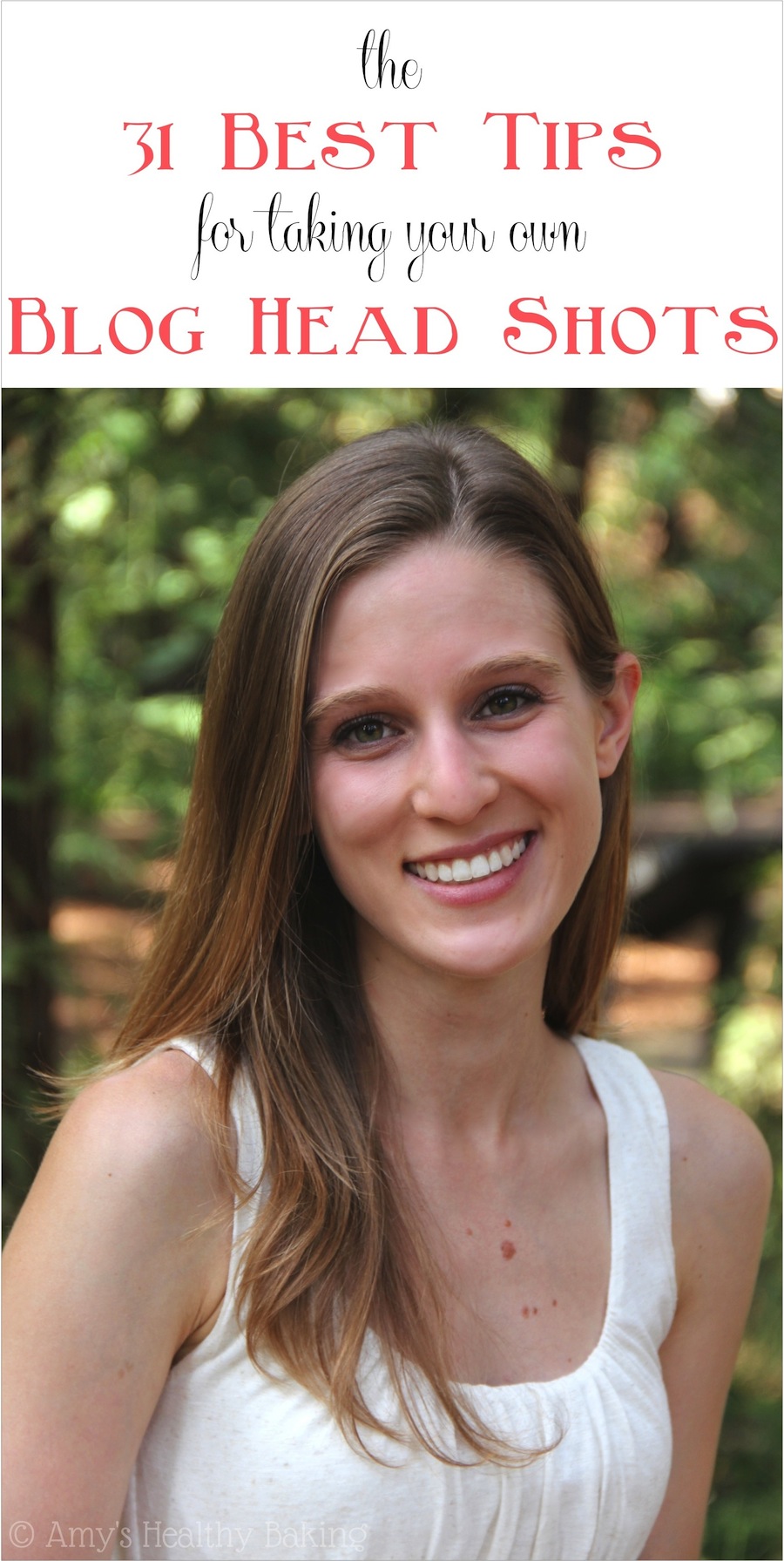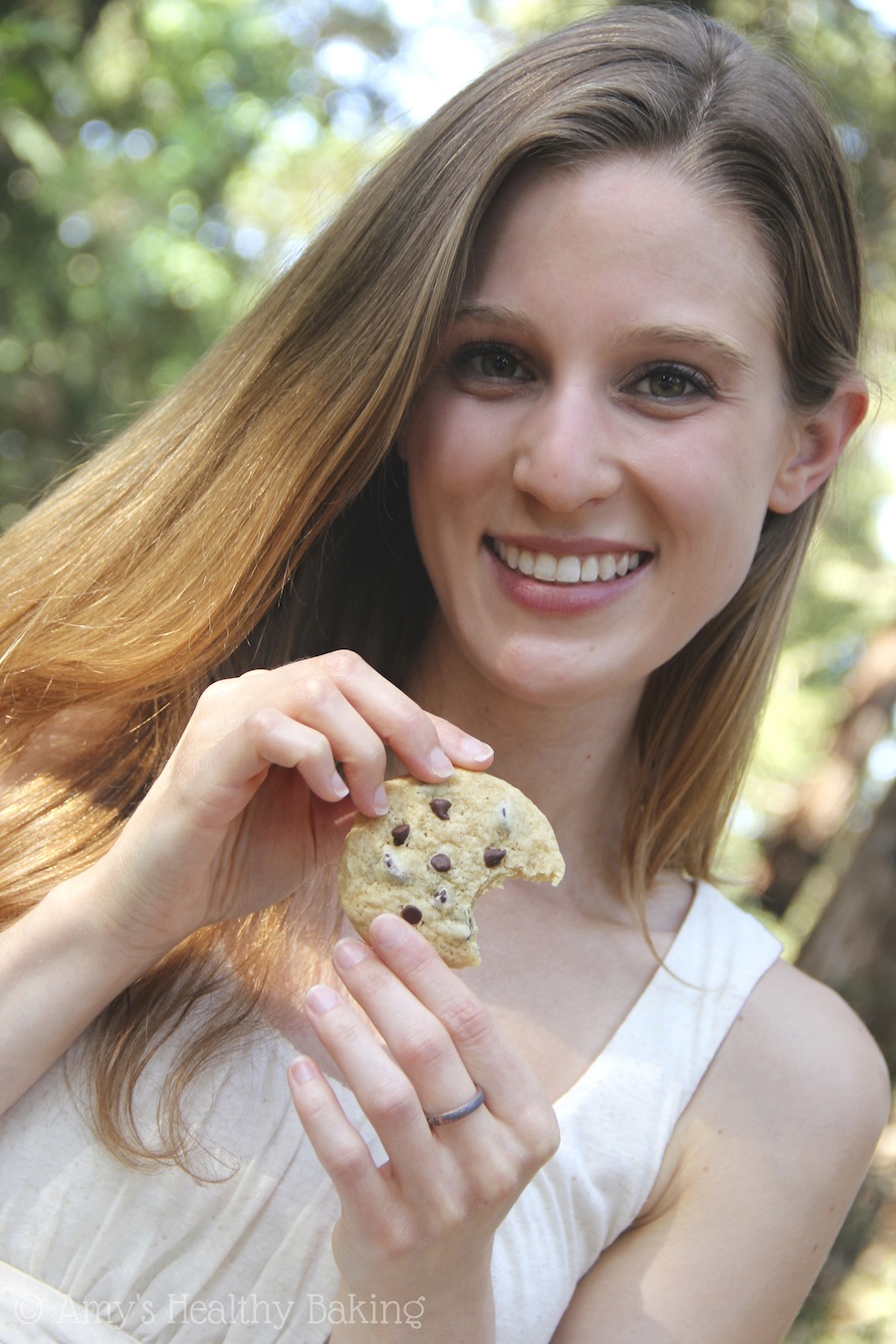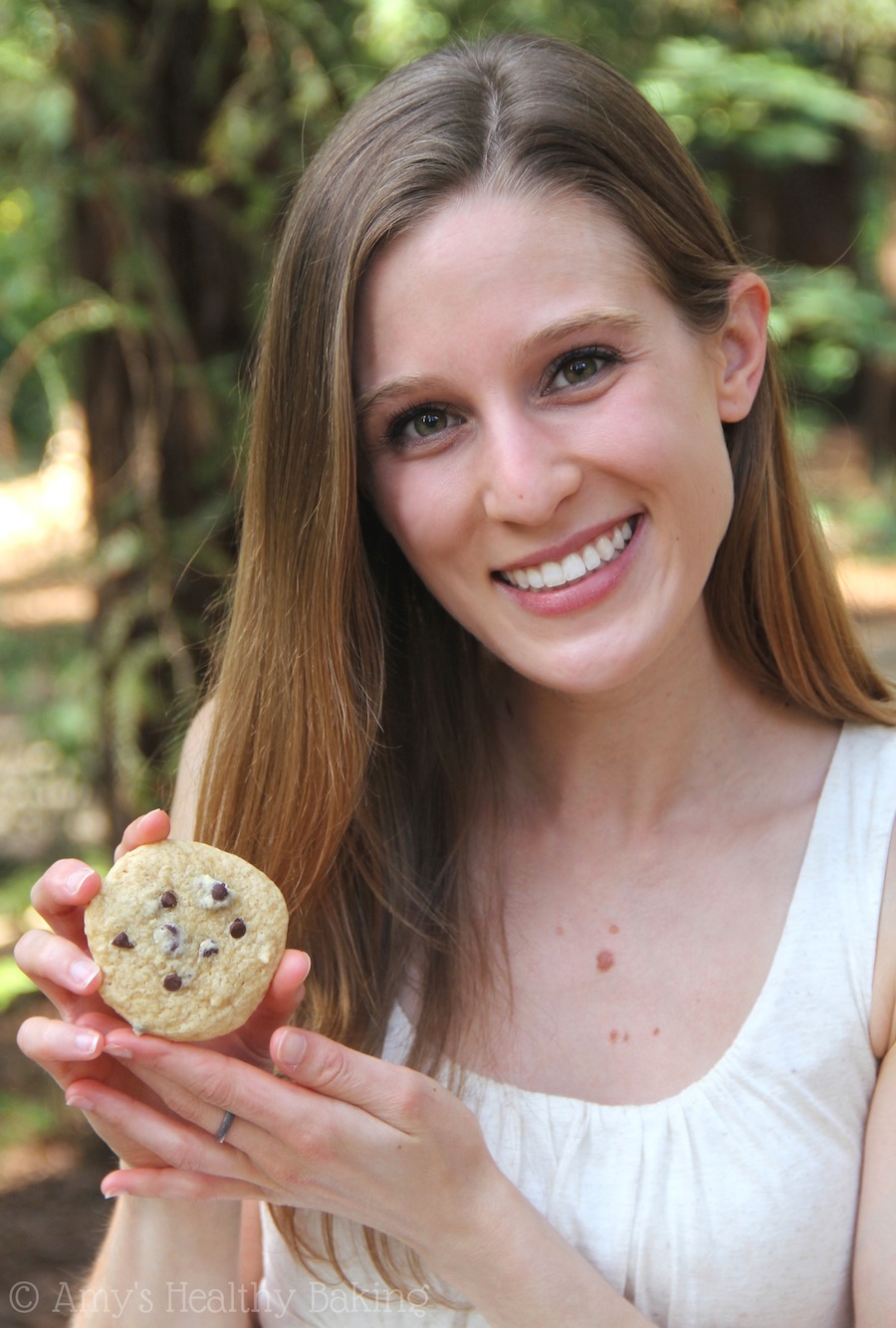Two weeks ago, I found myself in quite a predicament: I wanted to order new business cards that included my picture, but I disliked almost every single photo on my computer. Without the time or money to phone a professional, I emailed a high school photography friend to ask for her help. She sweetly agreed, and we planned a date for the shoot.
The day before, my friend fell sick with a nasty cold. Although she still offered to come over, I insisted that she stayed in bed to rest. Stressed over what to do, I explained the situation to my guy when he arrived home from work, and he immediately offered to snap the camera shutter, despite not entirely understanding how my dSLR worked.
On Easter Sunday, with kids on the other side of the park pulling apart bushes and jumping into trees in search of colorful eggs, we headed out for my head shot photo shoot. An hour later, after countless chuckles and a few funny faces, we climbed back into the car to download the results.
In spite of my guy’s declaration that he wasn’t a great photographer, the shots still turned out beautifully!
At some point during your blogging career, you’ll probably want to have your portrait taken too. If you’ve just started and are only make pennies—or prefer spending your monthly income on gourmet chocolate truffles and fancy restaurants—a professional photographer might not fit into your typical budget. But if you follow my 31 simple tips for taking your own, you’ll still end up with top-quality portraits for a fraction of the price!
The Photographer
- Phone a friend. Or a family member. Or your book club leader. As long as they know how to squint through the viewfinder and click the shutter, they’re the perfect photographer! Also, choose someone you’re comfortable around and who easily makes you chuckle. You may feel awkward while standing in front of the lens instead of behind it, so it’s really beneficial to bring along a person who helps you relax.
- Have s/he wear comfortable clothing and shoes. Depending on your chosen location, your friend may squat, sit, twist, turn, or stand on her tiptoes to frame the perfect shot. Those positions might be cumbersome in a pencil skirt or a business suit, so prepare your photographer!
- Wear the same colored clothing. This is especially important if your photographer isn’t the most camera-savvy person in the world. By wearing the same color, you can have them pose in your chosen location while you set the proper camera settings (ISO, aperture, shutter speed, etc.) to achieve the most flattering lighting exposure.
- Prepare s/he for how long the session could take. In general, your photo shoot will take between 1-2 hours total from the time you hoist your camera to when you snap the lens cap back on. If you’re both prepared for that time frame, neither of you will feel rushed or stressed.
- Make sure s/he eats ahead of time. It sounds silly, but a hungry photographer makes for a tense—and shortened—photo shoot. And most likely, neither of you will be happy with the results! Pack a few snacks too, just in case, to ensure the session goes smoothly.
Your Appearance
- For clothing, remember the 3 C’s: Classy, Comfortable & Confident. Some stylists warn against wearing light colors or tank tops, but I completely ignored that advice. I picked my favorite dress, a white number with lace that looked timeless and flattering, because it fit well and I felt pretty in it. When you’re comfortable and confident in your clothes, you’ll feel more at ease during the shoot, and your photos will look natural and relaxed.
- Stick with neutral-colored makeup. I’m no makeup artist—I hadn’t brushed on eye shadow in years before my shoot!—but natural tones always look tasteful. Search for tutorials on the internet if you need detailed guidance, and try out different looks during the week leading up to your photo session. However, if you wear bright magenta lipstick on a daily basis or teal eyeliner as your signature look, feel free to apply those for your shoot—these photos are supposed to be the best representation of you and your appearance.
- Wear sunscreen the entire week before. Less than 24 hours before my photo shoot, I sat next to my dad at a baseball game in the bright spring sunshine. I carefully rubbed sunscreen across my cheeks, but I managed to miss the back of my right shoulder. It turned bright pink, but thank goodness the sunburn wasn’t on my nose—I would’ve spent hours mastering the editing airbrushing technique to erase that evidence after my portrait photos!
- Get your beauty rest. Go to bed early, switch on a noise machine, turn off your alarm—whatever you need to do to avoid those dark baggy circles under your eyes! Yes, you can minimize their grayish color with makeup and Photoshop, but nothing beats those extra Z’s.
- Go barefoot. Or slide on flip flops. Or lace up your favorite well-worn pair of Converse. Most of the time, only your head and torso appear in the frame, so wear whatever shoes you feel most comfortable in! But just in case you decide to take any full-length shots, bring along a nice pair you can easily slip into that matches your outfit too.
The Location
- Nature always looks classy. Some people own huge airy kitchens with bright marble countertops, clean white cupboards, and absolutely no clutter in sight. If you have one of these, by all means take your head shots there! Otherwise, skip on outside and find a quiet, serene park. Deep earthy tones of green and brown always make for a timeless backdrop!
- If outdoors, avoid too many signs of civilization. That gray concrete trashcan, those 6-year-olds giggling on playground swings, that red “Pick up after your dog” sign… Those background nuisances all distract from your beautiful face, so stick with simple trees and flowers instead!
- Avoid or remove distracting objects in the background. A continuation of the last tip… If outdoors, set your purse and jacket behind the photographer instead of next to your side, and glance behind you before she clicks the shutter to double-check no wayward kids or dogs run into the frame. If in your kitchen, clear the clutter off of your countertops and wipe up any stray spills on the cabinets. We want the focus on you, not your surroundings!
- Try to have a monotone color in the background. Less distracting, a single shade ensures that the emphasis stays on your face, but it doesn’t have to be entirely one color. In my photos, I opted for varying shades of green from the trees because they all belonged to the same color family. You can try to pick a color that complements your clothes or makes your eyes pop, but that’s not necessary. As long as it’s subtle and subdued, you’re good to go!
The Shoot
- Pick a sunny day. Natural sunlight is always the best lighting! Its glow brings out the warm tones in your skin, softening your features and giving you the most flattering appearance.
- Pick a warmer day. Like Goldilocks stressed, the temperature should be not too hot and not too cold! Above 90° you’ll probably be red-cheeked and sweating, whereas you’ll be shivering with blue lips below 40°. (Just guesstimates, of course!) With moderate temperatures, you’ll feel comfortable and look more natural in your photos.
- Avoid windy days. Tangled hair whipping around your face and sticking to your shiny new lip gloss does not make for professional photos.
- Shoot sometime between mid-morning and mid-afternoon. During these times, the sunlight is brightest and easiest to work with. Although dawn and dusk look artsy, your photographer might not know how to shoot in these low-light settings. Make it simpler for her: clear your busy schedule and plan accordingly!
- Set your camera settings with the photographer as the subject. This is why you requested that your photographer wore the same color! Ask her to sit where you plan to pose, and snap a few shots to set the proper ISO, aperture and f-stops. (If that’s Greek to you, just use your camera’s automatic setting without flash.) If you both wear the same shade, it’ll guarantee that your photos turn out exactly how you expect after programming your camera. While fiddling with the settings, also double-check the background to eliminate any distractions.
- Avoid strange lighting or shadows. This is especially important for those falling on your face. It’s possible to burn and dodge in Photoshop later to minimize—but not eliminate—them, so give yourself a head start and stick exclusively to pure sunlight or shade. (Thankfully the shadows in the shot above weren’t too bad!)
- No flash! The flash brings out unflattering bluish skin tones and creates dark shadows behind you. Not good! By shooting on a sunny day, you shouldn’t need the flash anyway.
- Use at least 4 different backgrounds. Although one particular tree or cabinet may look perfect in person, you might discover upon downloading photos that a strange twiggy branch or tiny spot of tomato sauce marred its surface. More backgrounds increase your options to work with and practically guarantee that you’ll fall in love with at least one picture!
- Shoot vertically. In general, this is the most widely accepted orientation for portraits because your body better fills the frame, and it also helps you appear slightly longer and leaner. Schools print vertical shots in yearbooks, businesses display them in their catalogs, and you can even mail them to your mom for her fridge!
- Take at least 100 photos. Yes, that many. We’re pretty particular when it comes to our own portraits. Think about it—how many school pictures did you actually like? Snap a variety of shots: some close-ups, some full-length, some in between. In addition to regular vertical portraits, you need at least 1 image that crops to a square for your gravatar (that little picture that shows up next to your name in blog comments or on social media sites), so taking lots of photos increases the odds that you find that special shot!
- Bring props. Cook your favorite pasta, bake your award-winning cupcakes, or pose with a slice of pepperoni pizza. Whatever you’re famous for, put that in the frame with you! Yes, you still need some solo shots for more professional settings (like business cards or guest posting for big-name brands), but those props will help you loosen up and avoid the awkward What-Do-I-Do-With-My-Hands Syndrome.
- Laugh! A laughing smile looks more natural and graceful than a forced I-hate-having-portraits-taken-please-can-we-be-done-yet one. Another reason to bring your best friend or favorite family member: they know what knock-knock jokes make you chuckle or how to sing silly songs that make you grin!
The Editing
- Pick 5-10 favorite images to edit. You may swoon over every shot, or you may struggle to find a single one and want to forget the shoot ever happened. (If the latter is true, a re-do is totally acceptable!) Selecting somewhere between 5 and 10 photos gives you a reasonable number to work with while preventing the editing process from taking 4 days to finish.
- Use an editing program you’re familiar with. Use Lightroom for your food photos? Go with that. Prefer Photoshop? That works too. I personally use GIMP, a free photo-editing software similar to Photoshop. By editing with a program you already know, it’ll minimize potential frustrations and make the process go much quicker.
- Use the smudge tool. The human face has pores, the occasional vein, turns pink, and surprises us with its unpredictable blemishes. The smudge tool smoothes these out and creates a more even appearance. But don’t use it at its full opacity! Set it at about 20-30% for the most flattering—yet still natural-looking—results. (Note: This may vary between programs, so experiment with yours first!)
- Burning and dodging are your friends. Remember those shadows we tried so hard to avoid? If they still show up—like where your head shades your neck or your hair blocked the sunlight on your cheek—select the dodge tool to lighten those areas. For the over-exposed parts, go with the burn tool to minimize their bright white glare.
- Whiten your teeth by airbrushing. I’d much rather bake another batch of cookies than apply those whitening strips to my teeth. If you’re in the same boat, select the airbrush tool, choose the white color (hex code #FFFFFF), and set it for 10-15% opacity. (Again, this may vary depending on your program.) Carefully airbrush your teeth once or twice until they look naturally bright white.
- Save, save, save! Save your files on your desktop, a memory stick, an external hard drive—any and every place possible! After spending weeks worrying about the photo session, another couple hours at the shoot, and an afternoon of editing, you don’t want to lose these precious pictures. Besides, you look beautiful—you might as well save the evidence and show the world!












I am looking for this tips. I was so confused about taking a headshot for my blog. These tips are helping me come up with good headshot images.
I’m so glad you found this tips useful! 🙂